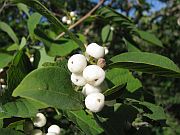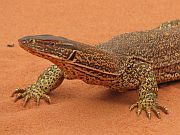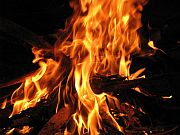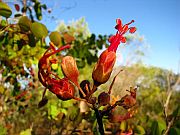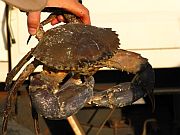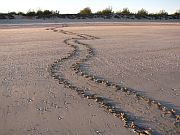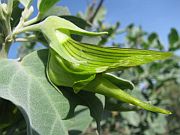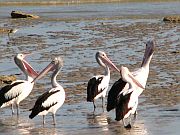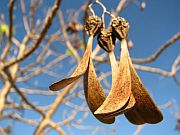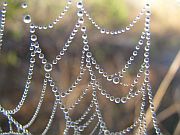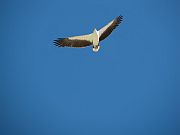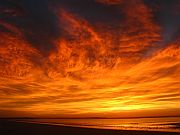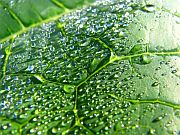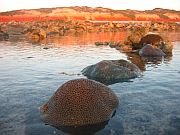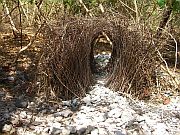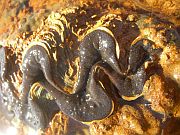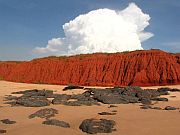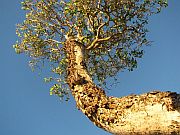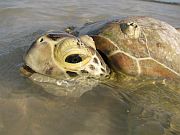Each season is characterised by changes in the environment
In our country, six seasons are perceived, as distinct from the introduced four-seasonal European calendar. Each is characterised by changes in the environment: the flowering, fruiting and seeding cycles of local plants; the changes in weather, temperature and wind direction; the presence of insects; the breeding cycles of fauna on land and in the sea; the presence of certain constellations in the night sky, the fatness and skinniness of species; the magnitude of tides.
The seasons are locally known as:
Mankala
December - March
Mankala is the rainy season, with magnificent sunsets and storms and occurs around December to March. However, rain may start to fall as early as November or it may start much later. Sometimes it might just rain for a short period of time; the length of this season varies according to the duration of the rainfall.
Plant growth is rapid. The rain softened ground enables young shoots to push their way through to grow. In the sand dune area, the Yarrinyarri (Bush Onion) has made shoots and grown but its bulb will not be ready to gather until later, in the drier seasons. Trees like the Gubbinge (Billy Goat Plum), Guwal (Dogwood Bush) and Magabala (Bush Banana) are in fruit. Mankala is the best time to eat Magabala because that is when it is soft and sweet and the whole fruit can be eaten. Insects are abundant and multiplying rapidly and soon the pools will be full of tadpoles and mosquito larvae.
In the evenings Nimanburr (flying foxes) can be seen flying in big groups as they leave the mangroves, heading to the fruiting trees in the bush. This time of year, people avoid walking through thick grass growth due to snakes that are everywhere now. Lizards are still too skinny to hunt.
Mankala ends as the rainfall becomes inconsistent and Marul begins.
Marul
Marul season generally begins around April.
The weather is still hot and the humidity high. Soon the rain will stop. Marul is the time when bush foods are plentiful and a lot of different Mayi (bush fruit) are available. The plants that flowered during Mankala are now in fruit.
Due to the abundance of sustaining water in the bush, wallabies and other animals can move freely. All the lizards are fat after feeding on the abundant supply of insects. Lizards are now easy to catch because it doesn't move as fast when fat.
Baninyburru (carpet snake) get ready to have their young now. Many bush birds arrive this time of year to eat the nectar and fruit from the trees. The honey-eaters, berry-eaters and insect-eaters are the most common birds during this time. The rainwater that lay as puddles and pools on top of the ground in Mankala quickly evaporate. Tadpoles have become frogs and mosquitoes have multiplied. People burn Gungkara (Conkerberry) wood to keep them away.
The edible root of the Magabala (bush banana) begins to dry out and Minmin (Parrot Pea Bush) is in flower. Birds feed on its nectar. An edible grub is found in the stem of the Minmin plant.
Towards the end of Marul, the Gardgu (Inland Bloodwood) tree is in full flower. Grass seeds are dry now and the south-east winds start to blow. Wirralburu arrives.
Wirralburu
Wirralburu begins around May - The temperature starts to cool.
The Gardgu (Inland Bloodwood) is flowering, indicating the arrival of Wirralburu.
It is the season when the first south-east winds start to blow and the dry grass seeds are knocked off. The waterholes continue to dry up and eventually only the more permanent ones will have water. The nights and mornings begin to get cold and people light fires at night to keep warm. The Yarrinyarri (Bush onions) are dug up from the shallow sands and eaten raw or cooked in hot ash and the sandpaper fig is abundant, turning purple and soft when ripe.
The colour of the ocean changes and the reef fish are still skinny. Walgawalga (salmon) head towards the creeks to lay their eggs. All lizards continue to be fat throughout Wirralburu, and dig their holes in readiness to hibernate over the cold time.
Towards the end of Wirralburu, the nights get colder and fogs starts to occur. In the early morning sky, once the Seven Sisters can be seen rising in the east people know Barrgana has come.
Barrgana
June - August
Wintertime! Sea and nights are cooler. Whales can be seen migrating north along the coast. The Seven Sisters can be seen in the eastern part of the early morning sky and shine more and more brightly. The nights and morning become even colder. The south-east winds blow strongly and some rain may fall but not enough to fill waterholes. This rain is called 'Mujung' and is known as the 'knock-em-down' rain, because it flattens the grass and knocks the last grass seeds of their stalks. Small dust storms can occur due to very dry ground.
In the sea the Walgawalga (salmon), catfish and Galbany (mullet) are fat. Jugan (dugon) is also fat throughout Barrgana.
In the bush, the lizards are still fat but are in hibernation and a lot of plant food is available. On the Gardgu (Inland Bloodwood) the 'Dardaw' (Bloodwood Apple) has formed. This is not the fruit of this tree but is a gall formed by the larvae of a small fly. To be edible it is important that the 'eye' is present in the bottom of the 'Dardaw'. If not, it means the insect has already left.
The Yarrinyarri (Bush Onion) are still plentiful in the shallow sands. The Gungkara (Conkerberry) fruits and picked when it is black, the Jigal (bauhinia) tree starts to flower. The Jigal is so called because its leaves face back to back as in the term Jigal, used to describe the (avoidance) relationship between son-in-law and mother-in-law. The Jigal flower is full of sweet nectar that can be sucked early in the morning. The magabala (Bush Banana) is no longer collected. It has dried and split open to disperse its seeds.
Towards the end of Barrgana, Lirringin (Soap Wattle) and Wongai (Spear Wattle) start to bear their pods, indicating the arrival of Wilburu.
Wilburu
Wirlburu begins around September, a transition time when the weather starts to warm up.
People take advantage of the low spring tides to explore the reef which offers an abundance of fish in Wirlburu such as Bream, Sea Perch and Snappers. Shell fish on the reef are also fat. A walk in the mangroves can be rewarding as the oysters and mangrove grabs are now fat at this time.
Towards the end of Wirlburu, the days become very hot and humid, making the arrival of Larja.
Larja
October - November
Larja is the time of the build-up to the Wet. The days are very hot and the air is humid.
In the bush Wattle pods are dry and have split open. People search the trunks of Jigal (Bauhinia) and Gardgu (Inland Bloodwood) trees for the honey fly's wax entrance to its nest. The moonga (honey) is removed and the nest resealed up. The Gubbinge (Billy Goat Plum), Guwal (Dogwood bush) and Gumamu (Sandalwood) all flower. Gradually the rain clouds build up and the north-west winds blow harder. In the distance thunder can be heard after lightning flashes.
Jinnup (stingray) are fat and people search along the water's edge to spear them. The hunter has to be careful of the spike at its tail. If poked, the poisoned blood has to be squeezed out.
All the reef fish and shell foods are still fat. In the evening sky the clouds that come in from over the sea indicate that it is mating time for turtles ('married turtle time') and that their eggs will soon be found on the beach. Larja ends when the first rains fall.

